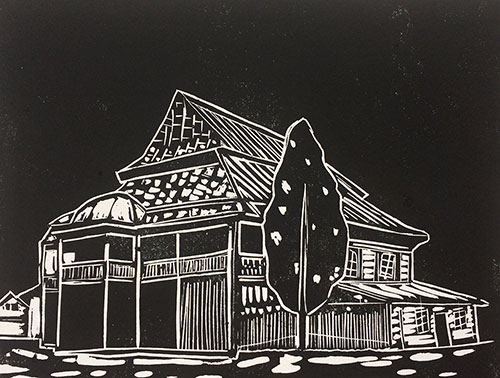Lost Treasures: The Wooden Synagogues of Eastern Europe The Artwork of Bill Farran
Kamyanka Buzka, Ukraine - Original Linocut
Kamyanka Buzka, Ukraine - Original Linocut
Yiddish name: Kaminka
The presence of Jews in Kamyanka Buzka was first recorded in 1465. In 1589 the Jewish community was permitted to purchase houses, engage in trade, and build a synagogue. The wooden synagogue of Kamyanka Buzka, built in 1627, was exceptionally large and beautiful with a dome over the entrance. It had a main prayer hall, a western two storied annex and gallery under the same roof. The women’s section was upstairs with inside staircases.
Kamyanka Buzka was under Soviet control between 1939 and 1941. The Jewish community changed during this time, when community institutions were dissolved, and independent political activity was forbidden. The traditional Jewish economy was also hurt. Jews tried to integrate into new activities by organizing themselves into craftsmen's cooperatives and entering the municipal and civil service.
On June 28, 1941, German Wehrmacht troops occupied the town, and the next day they murdered two hundred Jews. On July 2, the Ukrainians, instigated by the Germans, carried out a pogrom, killing a few hundred Jews. On September 14, 1942, approximately 1500 Jews were deported to the Belzec death camp. The last Jews still living in Kamyanka Buzka were murdered by the Nazis and buried in a mass grave.
